

U.S. Air Operations Began Here In 1942
HEADQUARTERS, 14th AIR FORCE - This week the USAAF is celebrating its third birthday in China. From the tiny, underequipped, understaffed China Air Task Force, of the Tenth Air Force, which came into being on July 4, 1942, under the command of Brig. Gen. C. L. Chennault, the AAF has grown into a formidable, hard-hitting air force which has beat the enemy back time and time again to gain control of China's skies.
Born without fanfare, the China Air Task Force was almost without planes, equipment, supplies or personnel. It was, however, possessed of two heritages which attracted to it men of courage, willing to accept the challenge it offered; the almost legendary tradition of the American Volunteer group (AVG) - world famed as "The Flying Tigers," and the leadership of its commander, Gen. Chennault.
Thirty-five Tomahawks (P-40B) and Kittyhawks (P-40E), combat-scarred from the Burma campaign, plus 10 Lancers ((P-43) borrowed from the Chinese Air Force constituted the aircraft of the newborn CATF. A few recently arrived bombers were also included.
BORROWED TYPEWRITERS
Tools, spare parts, and such equipment as existed were inherited from the remnants of AVG equipment and the loot of Rangoon. Administrative equipment such as typewriters were borrowed for a few days at a time from European missionaries. A half-dozen C-47s, barely flyable, were available for trips over the Hump to bring in supplies. A nucleus of AVG men elected to remain with the China Air Task Force to form the first AAF fighter group in China.
|
Entrenched in positions on Hengyang, Lingling, Kweilin and Kunming, the China Air Task Force set out to "take on" the Imperial Japanese Air Force in China.
LOST: JAP AIR FORCE
Strategically located American bases in the Siang corridor proved a serious threat to the Japanese and at the end of July the enemy began an all out blitz for their complete destruction. Attacking with tremendous air power, wave after wave of bombers pock-marked the runways, but thousands of Chinese repaired them in a few hours and the blitz turned out to be more costly to the Japanese that it did to the new born China AAF.
In May 1944, two years later, the Japanese, realizing they could not make their Chinese holdings pay off as long as the Siang corridor bases were in operation, were forced to divert ground forces and supplies needed on other fronts in a campaign to take them. Now, three years later, the struggle still goes on. In the interim, the enemy has lost his air force in China and the bases still in his possession are held precariously.
Gen. Chennault devised a tactical plan to keep his small task force mobile, enabling it to move to any point of a wide perimeter to keep the Japanese force off balance, divided and frustrated. Inadequate supplies trickled over the Hump. Missions had to be predicated upon finding enough gasoline to accomplish them.
The Fourteenth Air Force, commanded by Maj. Gen. C. L. Chennault, came into being on March 10, 1943. It's area of operations was outlined as southeast and central China, the South China Sea, Hainan, Formosa, north Burma and Thailand. While logistics and personnel problems hampered the operations of the Fourteenth as it did the CATF, the Fourteenth emerged as a powerful fighting force, only today its fighters have great difficulty in finding a single Japanese plane in its sphere of operations.
MAJ. GEN. CHENNAULT'S
ORDER OF THE DAY
"Today, July 4, 1945, we celebrate three important occasions - the 169th anniversary of the Declaration of Independence, the third anniversary of the establishment of the American Army Air Forces in China, and the third anniversary of the activation of the Twenty-third fighter group.
"These three anniversaries mark days of adversity for people struggling for independence and to throw off the yoke of oppression. They also make days of hope and determination for victory.
"On July 4, 1942, the Japanese air force was still very strong in China although the gallant pilots of the American Volunteer Group had destroyed many of their planes and had forced them to respect the ability of American airmen.
"Since July 4, 1942, the China Air Task Force and later the Fourteenth Air Force with the 23rd fighter group spearheading the attack, have shown the world and particularly the Japanese what a small, well-trained and determined air force can accomplish with the help of our Chinese Allies. We have demonstrated that a few Americans with their native initiative, ingenuity, courage and leadership, and with a minimum of combat airplanes , could defeat the Japanese air force in China with its initial huge numerical superiority, unlimited facilities and supplies.
"Our job is not finished, however, and will not be finished until all Japanese dreams of conquest have been shattered. At every opportunity we must strike the enemy with every weapon at hand until with our Allies the final complete defeat of Japan is accomplished.
"On this historic day, remembering the ideals of our forefathers who fought in the War of Independence, I charge you, the officers and enlisted men of the Fourteenth Air Force, to rededicate yourselves to the principles of freedom and the determination that will end this war in early victory. I join you in the hope that we may be able to celebrate final victory and the next Fourth of July at home."
C. L. CHENNAULT, Major General, USA, Commanding, Fourteenth Air Force.
Flying Tiger Fighter Group Completes 3 Years In China
(EDITOR'S NOTE - Some confusion has arisen in previous stories about the Flying Tigers Group which is not to be confused with The Flying Tigers of the Fourteenth Air Force as a whole.)
AN EAST CHINA WING FIGHTER GROUP, 14TH AIR FORCE - On July 4, 1942, when the "Flying Tigers"

|
The Glorious Fourth of 1945, marking the Flying Tigers' third anniversary, was observed in equally practical fashion - Flying Tigers fighter squadron and detachment stationed at advanced China bases were still carrying on their bitter three-year battle against the Japs.
The group, a component of Col. Clayton B. Classen's East China Wing, is commanded by Col. Edward F. Rector, of Marshall, N.C. During the past three years it has destroyed (confirmed) more than 820 Jap aircraft, killed more than 20,000 Jap ground troops and sunk 131,000 tons of enemy shipping.
INHERIT AVG "KNOW-HOW"
As official successor to the AVG, in July 1942 the Flying Tigers Group absorbed more than 30 China-wise and Jap-wise AVG veterans. Included were many who have since made history among the Flying Tigers and other units of the Fourteenth Air Force.
For example, all three squadrons of the original group were commanded by AVG veterans: Maj. (now Col.) Edward F. Rector of Marshall, N.C.; Maj. (now Col.) David L. "Tex" Hill, Victoria, Texas; and the late Maj. Frank Schiel of Prescott, Ariz.
Although the Flying Tigers claim distinction on the basis of sustained teamwork rather than through individual achievement, numerous colorful personalities have inevitably appeared. In all, the group has produced 32 "aces."
OLDER IS LEADING ACE
Lt. Col. Charles H. Older of Beverly Hills, Cal. served with the AVG in 1941-42. He returned temporarily
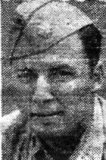
|
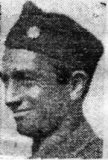
|
Sharing top honors with Older is Col. "Tex" Hill, Flying Tigers Commander during last summer's east China campaign. Now in the U.S. commanding a new fighter group, Hill while in China shot down 18½ Jap aircraft and destroyed one on the ground. Hill is second only to Maj. Gen. Chennault in number of decorations and awards earned in China.
One of the Flying Tigers' most colorful fighters was Lt. Col. John C. "Pappy" Herbst, Rancho Palomar, Pala, Cal. Herbst recently returned to the U.S. after playing a vital part as "Guerilla" squadron C.O. in harassing last summer's failed Jap drive along the Hunan-Kwangsi railroad. Herbst, who already had one German plane to his credit when he joined the Fourteenth Air Force, shot down 18 Jap planes during his tour of duty with the Flying Tigers.
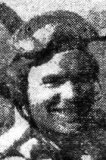
|
Capt. Forrest F. Parham of Kensington, Minn., currently a flight leader with the "Flying Shark" squadron, has shot down five Jap aircraft.
Recently returned for his second tour with the Flying Tigers is Capt. Marvin Lubner of Montgomery, Ala. During his first tour as a "Vanguard" squadron pilot. Lubner shot down six Japs. He is now commanding officer of the "Black Lightning" squadron.
SCOTT WAS FIRST C.O.
Perhaps the best known of all Flying Tigers is Col. Robert L. Scott, Jr., of Macon, ga. He is author

|
Other high-ranking Flying Tigers aces are: Lt. Col. Edward O. McCoomis, Winfield, Kans., who destroyed

|
EARLY DEFENSIVE FUNCTION
Until the late summer of 1943, at which time Jap air power in China began to dwindle, a primary function of the Flying Tigers was to intercept enemy air offensives. From the day of its activation through June 1943, the group was credited with 157 enemy aircraft destroyed in aerial combat at a cost of 18 Flying Tigers planes.
A typical episode of the early days occurred on September 20, 1943, when 30 to 40 Jap bombers with strong fighter escort attacked Kunming in a daylight raid. Pilots of the group's "Flying Shark" and attached "Flying Wall" squadrons shot down 18 enemy aircraft.
FIRST FORMOSA RAID
The devastating offensive capabilities of the Flying Tigers' new long-range P-51's were spectacularly
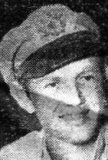
|
The most intensive, grueling period of Flying Tigers operations was perhaps, at the same time, the least spectacular - the summer and fall of 1944. The Japs were driving southward along the Hunan-Kwangsai railroad. Flying on an almost round-the-clock schedule, pilots of the Flying Tigers often put in as many as six missions each day.
So fiercely were enemy communications, troops and supply concentrations mauled that the Jap was forced to move almost exclusively at night. Well equipped, well fed and ignoring his losses, the Jap had captured or neutralized most of the Flying Tigers East China bases by the late fall of 1944.
SHANGHAI STRIKE
One of the group's most destructive raids in recent months was that of January 17, 1945, when Mustangs of the "Black Lightning" and "Guerilla" squadrons hit Jap airfields at Shanghai. The strike was led by the late Maj. Philip G. Chapman of Houston, Tex.
Col. Older, flying with the "Black Lightning" squadron, destroyed three Jap aircraft in the air, confirmed three on the ground and probably destroyed two more on the ground. Maj. Chapman and Lt. Wade H. Terry, Jr., El Paso, Texas, each destroyed ten on the ground.
"Guerilla" squadron pilot Lt. John C. Conn, Library, Pa., destroyed eight Jap aircraft on the ground. The following "Guerilla" pilots each destroyed six on the ground: Capt. Ira A. Binkley, Reading, Pa.; Lt. James B. Harrison, Atlanta, Ga.; Lt. Charles Copenbarger, Blue Mound, Ill.; and Lt. Nimrod W. E. Long, Birmingham, Ala.
Total destruction for the sweep includes 93 enemy aircraft destroyed, probably destroyed and damaged.
Three squadrons are at present assigned to the Flying Tigers group. Maj. Bruce Donns, Wichita, Kans., commands the "Guerilla" squadron. The "Flying Sharks" are commanded by Maj. Clyde B. Slocumb, Jr., of Doe Run, Ga., while Maj. David T. Whidden of Looxahoma, Miss., is acting commander of the "Vanguard" squadron.
'STRAT' HAILS 14th ON 3rd AAF BIRTHDAY
CALCUTTA, INDIA - "The Army Air Forces in China can well be proud of its three year record of accomplishments. Operating under probably the most difficult conditions in the world, its aircraft have ranged the length and breadth of this huge nation making every gallon of gasoline, every bomb and every bullet count.
"Too much credit cannot be given to my old friend Maj. Gen. C. L. Chennault and his fighting Fourteenth Air Force for the effective co-operation they have given to the ground forces of our Chinese Allies; the destruction they have inflicted on the enemy's communications routes, and the havoc they have played with Japanese shipping. "Inspired by their splendid example, I am confident that the AAF in China will go on to even greater achievements in the months to come."
GEORGE E. STRATEMEYER, Lt. General, USA, Commanding General, USAAF, India-Burma.
CHINA'S AIR DIRECTOR SENDS CONGRATS TO 14th
HQ., 14TH AIR FORCE - Gen. C. L. Chennault, commanding general of the Fourteenth Air Force, has received congratulations upon the double anniversary of Independence Day for the United States and the third anniversary of the United States Air Force in China from Gen. C. J. Chow, director, Commission of Aeronautical Affairs.
The message reads in part:
"Double anniversary is marked by the 4th of July. It is the American Independence Day and also is the day on which, under your able leadership, the AVG was reorganized into the United States Army Air Force, China Air Task Force. It was from this day that China received direct aid from the American Air Force under your command in its bitter war of resistance, which fact will no doubt form a most brilliant page in the annals of both America and China. I, on behalf of all officers and men of the China Air Force, on the occasion of this double anniversary, wish to express our heartiest congratulations to you, the officers and men, of your distinguished Air Force."

|
HQ., 14TH AIR FORCE - Marking the third anniversary of the United States Army Air Forces in China, the following commendatory message was received from Deputy Commander, Army Air Forces, Lt. Gen. Ira C. Eaker, Washington, D.C., for the special edition of the China Lantern:
"For the past three years the combat accomplishments of the Fourteenth have served to hasten the hour of Japan's ultimate defeat."
"The destruction of Japanese transportation, communications, vital targets, and the close co-operation given Allied ground forces in the Theater have been potent factors in reducing the enemy's capacity to carry on."
"That your air offensive has been effective despite obstacles adds to the stature of your achievements. Every member of the Fourteenth Air Force can take personal pride in the organizational teamwork that has made such success possible."
14th Lists 74 Men As World Air Aces
HQ., 14TH AIR FORCE - July 5 (Special to the China Lantern) - Of all the aces who have emerged from World War II, 74 of them, to date, have been Fourteenth Air Force men.
Tieing for first place at the head of the Fourteenth Air Force's "ace" list with a score of 18½ are Col. David L. Hill and Lt. Col. Charles H. Older. These men stand in 24th and 25th place in the overall list of aces of the AAF. Col. Hill charged up 12½ of his total with the AVG and Col. Older 10½ with the AVG.
|
With a score near the top of the list was the late Lt. Col. William N. Reed, who was credited with 17½, ten and one-half of which were with the AVG. Credit for 16 goes to T/Sgt. Arthur J. Benko, missing, and 15½ to Roger H. Neale, AVG flier.
Lt. Col. Edward O. McComas, who like Col. Hill and Col. Older, was once with the original Flying Tigers group has 14 enemy aircraft to his credit.
Thirteen planes each have been accounted for by Col. Bruce Y. Holloway, Lt. Col. John C. Herbst and Capt. John F. Hampshire, Jr. These men, too, were with the Flying Tiger group as was Col. Robert L. Scott, Jr., who has eleven planes to his credit.
Five AVG fliers, George T. Brugard (10¾), King A. Jernstedt (10½), Roger L. Little (10½), J. V. Newkirk (10½) and William D. McGarry (10¼) are the next ranking aces in the China Theater. Maj. James J. England ranks in sixteenth place among Fourteenth Air Force aces with a total of ten followed by Col. Edward F. Rector of the Flying Tiger Group with 9½.
Other aces include Lt. Col. William L. Turner and Maj. John S. Stewart with nine each; C. Bond, AVG flier, with 8¾; Roger T. Smith, 8¾ and F. Lawer 8½. Both the latter were AVG fliers. Eight scores were tallied by Lt. Col. Elmer W. Richardson and Maj. Arthur W. Cruikshank, Jr., of the Flying Tigers group. W. E. Barling (7¼), AVG flier, ranks next.
With a score of seven each are Peter R. Bartlet, AVG, Capt. John William Bolyard, Maj. Raymond H. Callaway, Capt. Lee O. Gregg, Capt. James W. Little, Capt. Heyward A. Paxton, F. Schile, AVG, and Lt. Kuang Fu Wang. These are followed by two AVG men, J. H. Howard with 6¼ (now Col. Howard, holder of the Congressional Medal of Honor) and J. R. Rosse with 6¼.
Other Fourteenth Air Force men in the "ace" bracket are Lt. Col. John R. Allison, Lt. Lester L. Prasmith, Maj. Albert J. Doulmer, Capt. Phillip E. Colman, Maj. Edmand R. Goss, Maj. John D. Lombard, Capt. Marvin M. Lubner, Lt. Leonard R. Reeves, Brig. Gen. Clinton D. Vincent, Capts. M. Williams, E. F. Overend, Maj. Keith G. Lindbeld, T. Hawood, R. W. Prescott, R. J. Dandell, R. H. Smith, D. S. Bishop and C. H. Laughlin.
Completing the list to this date are Lt. Col. R. L. Liles, Capt Stephan J. Banner, Jr., Maj. Phillip G. Chapman, Maj. Edward N. Nollmeyer, Maj. R. C. Pryor, Capt. Charles H. Dubois, Capt. Matthew M. Gordon, Jr., Capt. Melvin D. Kimball, Capt. Samuel P. M. Kinsey, Capt. Lynn F. Jones, Capt. Lyndon G. Marshall, Capt. Robert B. Schultz, Capt. Curtiss L. Scoville, Capt. Oran S. Watts, Lt. Russell D. Williams, T/Sgt. G. W. Gouldthrite and S/Sgt. John C. Peacock.

|
HQ., 14TH AIR FORCE - In December of 1943 the Imperial Japanese Air Force attained its operational peak and lost its hold in China. More Jap planes were in China; more missions composed of more planes per mission were directed against Fourteenth Air Force installations in that month than ever before or since. And yet it was the month of December 1943 which marked the shifting of air superiority from Japan to the Fourteenth Air Force in China.
Later, during the summer and fall of 1944, as may been seen on the accompanying statistical chart, the Japanese employed a large number of their planes in many attacks against "Flying Tiger" installations. It was part of their costly campaign for the Siang Corridor. But by that time their striking power had been considerably weakened.
How much it was weakened may be seen in an analysis of the relationships between the number of attacks made upon Fourteenth Air Force installations by the Japanese Air Force and the number of planes involved in the attacks.
Upon the activation of the China Air Task Force, predecessor to the Fourteenth Air Force, in July 1942, the average number of enemy planes involved in attacks against them was fifty-six per mission. From that time on, this striking power steadily declined until in April and May of 1945 it reached the zero mark.
A part of this deterioration of striking power can be attributed to the fact that Gen. Chennault, commanding general of the Fourteenth Air Force (and its predecessor, the China Air task Force) located his bases over a wide operational area. Also he flew his missions on an operational perimeter from one to two thousand miles in length, forcing the enemy, even when they had quantities of planes in China, to divide their air power both defensively and offensively.
On May 7, 1944, the Japanese Air Force literally resigned in it attempt to control China's skies. It made, during that month, the last daylight raid on a Fourteenth Air Force installation. At Suichwan twenty bombers, supported by 70 fighters, struck in force three times within 24 hours. The damage they inflicted was without doubt severe.
Intelligence later revealed however, that the attackers themselves were so shot up in the battle which raged over the base that the entire bomber force was rendered practically non-operational for almost two months thereafter. Only once again, in June at Lingling, did Japanese bombers ever appear during daylight hours, and on that occasion they fled without dropping their bombs upon the appearance of the Fourteenth Air Force fighters.
In the winter of 1944 the Fourteenth Air Force was released from strictly supporting action to the Chinese Ground Forces and was able to go out, on daylight missions of their own, directed primarily at the destruction of Japanese Air Power in China.
The rate of enemy aircraft destroyed on the ground immediately rose to an all time high between January and February 1945. It was significant to note that this increase in destruction of enemy air power on the ground was continuing even during the period in which the Japanese were most active.
Extraneous factors also have influenced the decline of the Japanese air power in China. The necessity for deployment of their air power in the Pacific areas has of course prohibited the replacement, re-equipment or material reinforcement of their battered air forces in China.
Their own mistakes, too, have been more than costly. Their decision that they must secure and hold the China corridor at all costs influenced them to expose and expend more aircraft than they could afford to lose. During their campaign for the corridor, from May 1944 through November 1944, their losses in the air and on the ground were high indicating that despite their numerous missions they were not getting at the source of their opposing air power.
After the Siang Corridor campaign was over, and they should have been consolidating the gains of their Ground Forces and preparing for new attacks, they found the Fourteenth Air Force still so strong that it came back and destroyed them in the air and on the ground.
All evidence from the statistical reports involved in the decline of Japanese air power in China, indicate that Japan has not only lost the initiative in the air, in that country, but has lost both the willingness and ability even to try to strike against the Fourteenth Air Force.


USAAF IN CHINA ANNIVERSARY
Centerspread of the July 6, 1945 edition
This page is dedicated to 14th Air Force Top-turret Gunner Ace T/Sgt. ARTHUR J. BENKO
Original issue of The China Lantern shared by CBI Veteran DAVE DALE
Copyright © 2007 Carl Warren Weidenburner
TOP OF PAGE PRINT THIS PAGE ABOUT THIS PAGE SEND COMMENTS
CLOSE THIS WINDOW
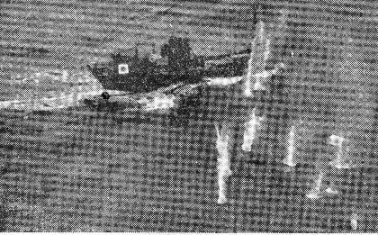
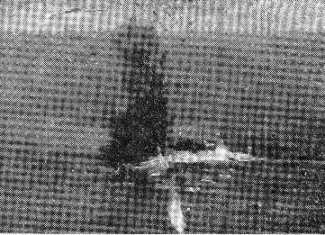 DEATH OF A JAPANESE VESSEL - These unusual photographs give a pilot's eye view of his approach shots and hits
made on an enemy vessel in the Tonking Gulf during a recent sea sweep by a Fourteenth Air Force plane.
Since July 4, 1942, Flying Tigers sweeps against merchant shipping alone have reached up to 445 vessels
destroyed (963,389 tons); probably destroyed, 184 vessels (392,550 tons) and damaged 538 (779,550 tons).
(USAAF photos).
DEATH OF A JAPANESE VESSEL - These unusual photographs give a pilot's eye view of his approach shots and hits
made on an enemy vessel in the Tonking Gulf during a recent sea sweep by a Fourteenth Air Force plane.
Since July 4, 1942, Flying Tigers sweeps against merchant shipping alone have reached up to 445 vessels
destroyed (963,389 tons); probably destroyed, 184 vessels (392,550 tons) and damaged 538 (779,550 tons).
(USAAF photos).
 GOOD SHOW with results to match from a direct hit recently on the bridge at Quang Tri in French
Indo-China by a B-25 of the Jiggs Squadron of the Fourteenth Air Force.
(USAAF photo).
GOOD SHOW with results to match from a direct hit recently on the bridge at Quang Tri in French
Indo-China by a B-25 of the Jiggs Squadron of the Fourteenth Air Force.
(USAAF photo).